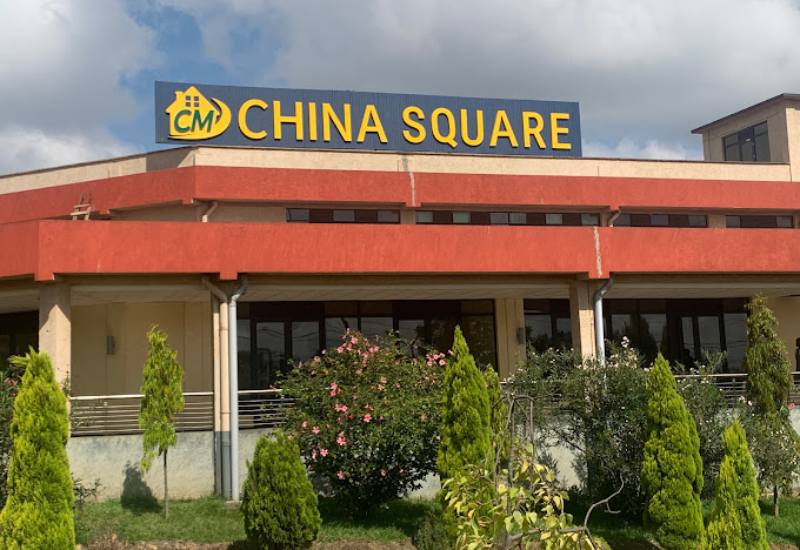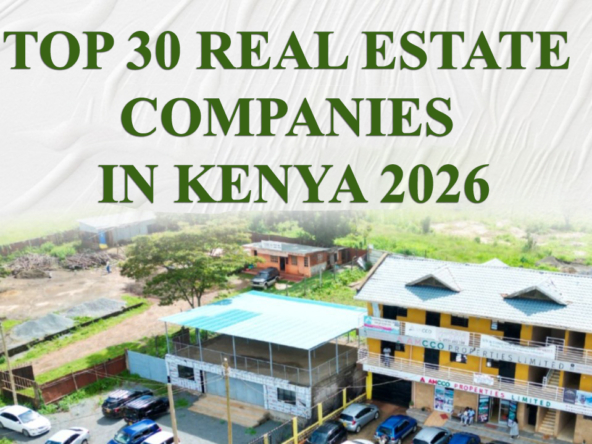Commercial Real Estate Kenya: 5 Smart Strategies for 2025
The landscape of Commercial Real Estate Kenya is dynamic, presenting a compelling mix of opportunities and challenges for investors in 2025. As East Africa’s economic powerhouse, Kenya continues to attract significant local and international interest in its property market. However, success in this sector demands more than just capital; it requires a nuanced understanding of evolving market dynamics, an ability to adapt to new challenges, and a keen eye for emerging opportunities. This article delves into the current state of Commercial Real Estate Kenya, highlighting key challenges and outlining 5 smart strategies to navigate this vibrant market and seize lucrative investment prospects.
Overview of Commercial Real Estate Kenya Market in 2025
The Commercial Real Estate Kenya sector remains a significant contributor to the nation’s economy, driven by robust economic growth, rapid urbanization, and an expanding middle class. Office buildings, retail centers, and industrial properties are the most prominent types within this segment. Nairobi, Kiambu, Mombasa, and Machakos stand out as key locations for commercial properties, attracting substantial investment due to their strategic importance and ongoing development.
In Nairobi, commercial retail properties average 9.8% in rental yields, while commercial office spaces yield around 8%. This indicates a healthy return potential for investors. The market has seen continuous development of shopping malls and commercial buildings, which have been successfully occupied and patronized, suggesting a sustained demand that is unlikely to slow down soon. The increasing interest from both local and international developers, financials, and retailers further underscores the sector’s positive outlook for Commercial Real Estate Kenya.

Key Challenges Facing Commercial Real Estate Kenya
Despite its promising outlook, Commercial Real Estate Kenya is not without its hurdles. Investors must be aware of these challenges to formulate effective mitigation strategies:
- Increased Cost of Capital: Globally high interest rates and tightened foreign exchange reserves contribute to a higher cost of capital for developers and investors. This can impact project viability and profitability.
- Pressure on Dollar-Pegged Lease Models: Currency volatility and liquidity constraints in the market are putting pressure on dollar-peg lease agreements. Tenants are increasingly negotiating harder on lease structures, pushing for USD-indexed agreements or purely local currency leases, which can affect revenue predictability for landlords.
- Potential Oversupply in Some Segments: While demand is generally strong, certain areas or property types, particularly apartments in high-end Nairobi suburbs like Parklands, have shown early signs of potential oversupply. This can lead to slower growth in rental yields and property sales prices in those specific zones.
- Inefficient Regulatory Procedures: Complex and inefficient regulatory procedures, along with changes in land laws, can pose significant challenges for developers and investors, leading to delays and increased costs.
- Changing Client Demands: The market is evolving, with clients increasingly preferring high-quality stock that allows for modern retailing, distribution, and manufacturing practices. This necessitates continuous upgrading and development of new, modern commercial spaces.
Navigating these challenges requires adaptability, local market fluency, and strategic decision-making to ensure the long-term success of Commercial Real Estate Kenya investments.
5 Smart Strategies for Commercial Real Estate Kenya in 2025
To thrive in the evolving landscape of Commercial Real Estate Kenya, investors need to adopt smart, adaptive strategies. Here are five key approaches:
1. Embrace Flexible Leasing and Pricing Models in Commercial Real Estate Kenya
Given the pressure on dollar-pegged leases, adaptability in pricing and leasing is crucial. Investors should be flexible in offering USD leases, USD-indexed agreements, or purely local currency leases to accommodate tenant preferences and market realities. This flexibility can help maintain occupancy rates and attract a wider range of businesses. Understanding the local currency dynamics and having embedded supplier networks can provide a competitive advantage in structuring financing and operational costs.
2. Focus on Modern, High-Quality Stock and Strategic Locations for Commercial Real Estate Kenya
The market is demanding high-quality commercial and industrial spaces that support modern business practices. This means investing in or developing modern industrial parks (like Tatu City Industrial Park) and office spaces with contemporary amenities. Furthermore, there’s a growing preference for serene locations outside Nairobi’s congested industrial areas (like Baba Dogo and Mombasa Road). Areas within Nairobi’s periphery, such as Kiambu and Machakos counties, are becoming hotspots for industrial parks due to their accessibility and proximity to key airport and railway terminals. This strategic relocation offers significant opportunities for Commercial Real Estate Kenya.
3. Diversify into Emerging Niche Commercial Sectors in Kenya
Beyond traditional office and retail, emerging asset classes offer promising returns. These include serviced offices, which are gaining popularity due to the growth of SMEs and changing office space demands. Smart offices, equipped with amenities like gyms, cafeterias, and accessibility features, are also a new trend. In the hospitality sector, dual-branding (combining serviced apartments and hotels in one building) is gaining traction, offering diversified revenue streams. These niche sectors cater to unmet needs driven by urbanization and evolving lifestyles, providing unique opportunities for Commercial Real Estate Kenya.
4. Leverage Infrastructure Development for Commercial Real Estate Kenya Growth
Ongoing and planned infrastructure projects, such as the Nairobi Expressway, the expansion of the Mombasa port, and new railway lines, are significantly improving connectivity and boosting property values in surrounding areas. Investing in commercial properties located near these developments can yield high returns due to improved accessibility and increased economic activity. For example, the expansion of the Lamu Port is poised to transform northern Kenya into a major trade hub, creating new opportunities in logistics, warehousing, and commercial properties.
5. Prioritize Due Diligence and Local Expertise in Commercial Real Estate Kenya
Given the complexities and risks in the market, thorough due diligence is non-negotiable. This involves verifying property ownership, checking for encumbrances, and understanding zoning regulations. For foreign investors, partnering with local developers who have deep operational roots and fluency in local systems is crucial. These local players possess embedded supplier networks and an understanding of municipal processes, which are vital for successful execution in Commercial Real Estate Kenya.
Opportunities for Commercial Real Estate Kenya
The Commercial Real Estate Kenya market is ripe with opportunities across various segments:

- Office Sector: Westlands, Gigiri, and Parklands continue to record high returns (8.5%, 8.2%, and 8.0% respectively) compared to the market average. Demand for high-quality office spaces remains strong, especially for semi-fitted offices catering to growing SMEs.
- Retail Sector: Westlands, Karen, and Kilimani offer relatively higher returns (9.9%, 10.2%, and 9.5% respectively) due to the presence of high-quality retail spaces and strong consumer demand. The expansion of international retailers like Carrefour signals continued growth.
- Hospitality Sector: Westlands, Limuru Road, and Kilimani show strong investment prospects, with average rental yields surpassing the market average. The surge in tourism also drives demand for high-end and mid-range properties, including vacation homes and rental properties.
- Industrial and Logistics: The demand for modern industrial parks in Nairobi’s periphery (Kiambu, Machakos) is increasing, driven by changing clientele who prefer high-quality stock for modern retailing, distribution, and manufacturing practices.
- Mixed-Use Developments: The rise of mixed-use developments and the changing preferences of the younger population, who seek modern and flexible living spaces, create opportunities for integrated commercial and residential projects.
Conclusion: Seizing the Future of Commercial Real Estate Kenya
The Commercial Real Estate Kenya market in 2025 offers a compelling investment landscape, characterized by robust growth drivers and diverse opportunities. While challenges such as capital costs and currency volatility persist, strategic adaptation and a deep understanding of local market dynamics are key to success. By focusing on modern, high-quality developments, embracing flexible leasing models, and diversifying into emerging niche sectors, investors can effectively navigate the complexities and capitalize on the significant potential for high returns.
Kenya’s position as a regional economic hub, coupled with ongoing infrastructure development and a growing demand for sophisticated commercial spaces, ensures that its real estate sector remains a lucrative venture. For those willing to engage with local expertise and adopt forward-thinking strategies, Commercial Real Estate Kenya promises to be a rewarding investment in the years to come.
Frequently Asked Questions (FAQs) about Commercial Real Estate Kenya
Q1: What are the current rental yields for Commercial Real Estate Kenya?
In Nairobi, commercial retail properties average 9.8% in rental yields, while commercial office spaces yield around 8%. Overall, commercial properties can offer an ROI of approximately 8% to 15%.
Q2: What are the main challenges for investors in Commercial Real Estate Kenya?
Key challenges include increased cost of capital, pressure on dollar-pegged lease models due to currency volatility, potential oversupply in some segments, and complex regulatory procedures.
Q3: Which areas are hotspots for Commercial Real Estate Kenya investment?
Hotspots include Westlands, Gigiri, Parklands (for offices), Karen, Kilimani (for retail), Limuru Road (for hospitality), and peripheral areas in Kiambu and Machakos counties for modern industrial parks.
Q4: How can investors mitigate currency risks in Commercial Real Estate Kenya?
Investors can mitigate currency risks by adopting flexible leasing and pricing models, including USD-indexed agreements or purely local currency leases, rather than relying solely on fixed dollar-pegged leases.
Q5: Are there emerging niche opportunities in Commercial Real Estate Kenya?
Yes, emerging niche opportunities include serviced offices for SMEs, smart offices with advanced amenities, dual-branded hospitality facilities (combining hotels and serviced apartments), and modern industrial parks for logistics and manufacturing.




